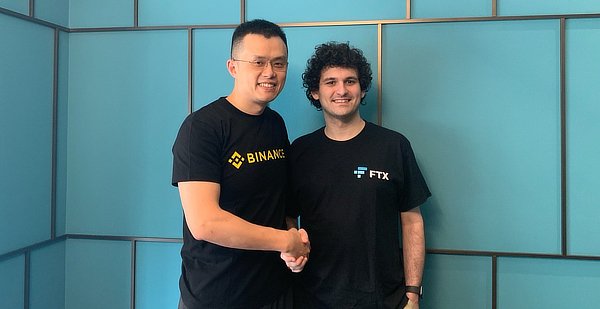
It's never been easy to find great projects in this current bear market. I found @VirtuSwap doing some amazing things and did all the hardwork for you. 🫂
Here's everything you need to know about Virtuswap👇
#DeFi #Virtuswap
Here's everything you need to know about Virtuswap👇
#DeFi #Virtuswap

Before we get into it. If you do appreciate my effort a Like & RT will be very much appreciated. let's get into it
Virtuswap, the DEX with the Best Efficiency
• Innovative Financial Engineering
• decreased trading costs
• Superior LP Returns
Virtuswap, the DEX with the Best Efficiency
• Innovative Financial Engineering
• decreased trading costs
• Superior LP Returns
What I will be covering:
-Decentralized Exchange: What Is It?
-What is VirtuSwap about?
-VirtuSwap's fundamentals
-How VirtuSwap operates
-Connect with VirtuSwap
-Decentralized Exchange: What Is It?
-What is VirtuSwap about?
-VirtuSwap's fundamentals
-How VirtuSwap operates
-Connect with VirtuSwap
The issue of high trading costs on constant-function-based automated market makers in pairs with limited or nonexistent liquidity pools is reduced by VirtuSwap.
The VirtuSwap method is based on virtual liquidity pools, where trades are carried out by building temporary, finite reserves of tokens that are not native to the pool.
Examples and simulations utilizing real data settings show that the gains to liquidity providers for accepting the associated minimal risk of temporarily holding non-native tokens are substantial.
In general, VirtuSwap financial technology enables trading on a decentralized exchange with an automated market maker at much lower costs, while also boosting predicted returns to liquidity provision.
Decentralized Exchange: What Is It ↓
Decentralized Exchange: What Is It ↓
Users can trade cryptocurrencies on a DEX (decentralized exchange) in a non-custodial setting without the requirement for a middleman to handle the transfer and custody of funds.
DEXs use blockchain-based smart contracts to replace traditional intermediaries, such as banks, brokers, payment processors, and other organizations, to enable the exchange of assets.
What is VirtuSwap about?
VirtuSwap is a brand-new DEX with unparalleled effectiveness.
What is VirtuSwap about?
VirtuSwap is a brand-new DEX with unparalleled effectiveness.
The VirtuSwap team is made up of finance experts and crypto vets, and it has the backing of major players in the space.
Through research, financial engineering, and data science, they are on a mission to make DEXes the dominant trading platform for cryptocurrencies.
Through research, financial engineering, and data science, they are on a mission to make DEXes the dominant trading platform for cryptocurrencies.
VirtuSwap's fundamentals
One of the pillars of DeFi is decentralized cryptocurrency exchanges (DEXes) based on automated market making (AMM).
One of the pillars of DeFi is decentralized cryptocurrency exchanges (DEXes) based on automated market making (AMM).
Aloosh and Li (2021), Amiram, Lyandres, and Rabetti (2021), and Cong, Li, Tang, and Yang (2021) are three examples of phony (wash) trading concerns that DEXes address, as well as outright fraud.
Despite the advantages of AMM-based DEXes, there are also some setbacks.
Despite the advantages of AMM-based DEXes, there are also some setbacks.
The main one, according to Lehar and Parlour (2021), is that trading on them is typically more expensive than on CEXes in terms of transaction costs as well as price effect or slippage.
The entire trading volume on DEXes is currently overshadowed by the overall trading volume on EXes, which may be attributed to this.
The fact that liquidity pools are either limited or nonexistent in the vast majority of trade pairs on DEXes is a significant factor in the relatively high trading costs on these exchanges.
Trade on an existing DEX is routed through two or more different pools when it involves a token pair with a small or nonexistent pool, significantly raising trading costs and slippage.
Even on DEXes with high total value locked (TVL), this issue cannot be resolved by providing enough liquidity to all pools because the ratio of trading pairs to currencies is almost quadratic.
The development of "virtual pools" is one of the solutions suggested by VirtuSwap.
The development of "virtual pools" is one of the solutions suggested by VirtuSwap.
Without resorting to indirect routing across numerous pools, trading using a virtual pool is comparable to using liquidity on other pools.
To put it another way, trading in tiny/nonexistent pools is equivalent to merely executing the buy portion of a trade on a real pool and depositing a reserve of the foreign currencies sold in the trade (up to a certain amount) in that real pool.
Despite the fact that the existence of reserve currencies exposes liquidity providers to the risk of currencies other than those in which they have supplied liquidity, the VirtuSwap algorithm makes sure that this risk is minimal and transient.
How VirtuSwap operates
The fact that each pool on VirtuSwap permits accepting "reserves" of additional assets in addition to the two "primary assets" makes it distinct from all other DEXes.
The fact that each pool on VirtuSwap permits accepting "reserves" of additional assets in addition to the two "primary assets" makes it distinct from all other DEXes.
Consider a number of safe deposit boxes that are connected to the pool, each of which is permitted to retain a certain asset but which are initially empty when the pool is first founded.
For a short period of time, reserves are held in the pools before being swapped for the native assets of the pool with reserves from other pools.
VirtuSwap improves trading efficiency by leveraging a reserve-powered virtual pool architecture to produce direct liquidity where none previously existed.
That's a wrap for #virtuswap.
If you enjoyed this thread:
1. Follow me @cyrilXBT for more of these
2. RT the tweet below to share this thread with your audience
If you enjoyed this thread:
1. Follow me @cyrilXBT for more of these
2. RT the tweet below to share this thread with your audience
https://twitter.com/1373665408193036293/status/1590303011112333312
• • •
Missing some Tweet in this thread? You can try to
force a refresh











